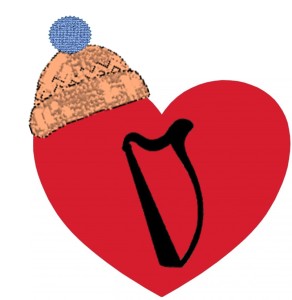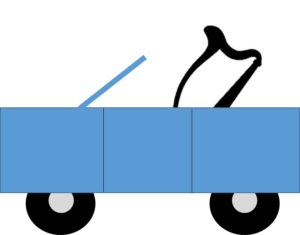Last week we talked about the environment you can set to help assure your harp’s health so this week let’s talk about getting your harp to the Harp Doctor – your luthier. You want to keep your Harp healthy after all!
While many harp maintenance tasks can be performed at home, I prefer to take my harp to my local luthier* just to be sure I don’t break anything! What do you mean you don’t have a luthier?!?
There are some standard maintenance items you should take care of annually – regulation and restringing. Regulation is the practice of calibrating your levers so that, when engaged, they raise the pitch of the string one half tone. Not about a half, not, like a half, not halfish, but a true half tone. This assures that when you tune and when you play you get the tones you expected and desire. Regulation is a delightful and desirable thing because after you spend all that time tuning, it’s nice to set the levers and be in tune still! But I ask my luthier to do it because regulation is a fiddly business and I don’t have the patience to get it right**.
Restringing is needed because your strings will get dull with age and wear. You might have a hard time hearing it because you play on them every day. Sometimes the string will let you know it’s time, refusing to hit or hold a pitch for very long or sounding “thuddy”. Its as if it is saying, “I’m soooooo tired, I just can’t hold this pitch any longer.” Restringing is not difficult but it is time consuming and can be hard on the hands. Your luthier can do this for you (for a well-deserved price) or you can do it yourself.
Now annually might be a bit of a convention because how often you need to restring or regulate is a function of many things including how much your play your harp, how hard you are on it, how much it travels, how often you tune, and the harp itself. Use “annual” as an estimate. Keep an eye and an ear on your harp and perform maintenance as needed.
So, take your harp to the Harp Doctor for regular checkups to keep it harp healthy!
*my local luthier is Rick Kemper (http://www.sligoharps.com/misc) and he does excellent work. There are other great luthiers throughout the country and there is likely one near to you – let me know who works on your harp and we’ll give them a shout out here too.
** knowing yourself is important in this – I am not patient, nor do I do well with tedious, repetitious, fine work. If you are good at this sort of thing (clock repair, zymurgy, or other fine work) you’d probably do a good job. I’m not like that!









